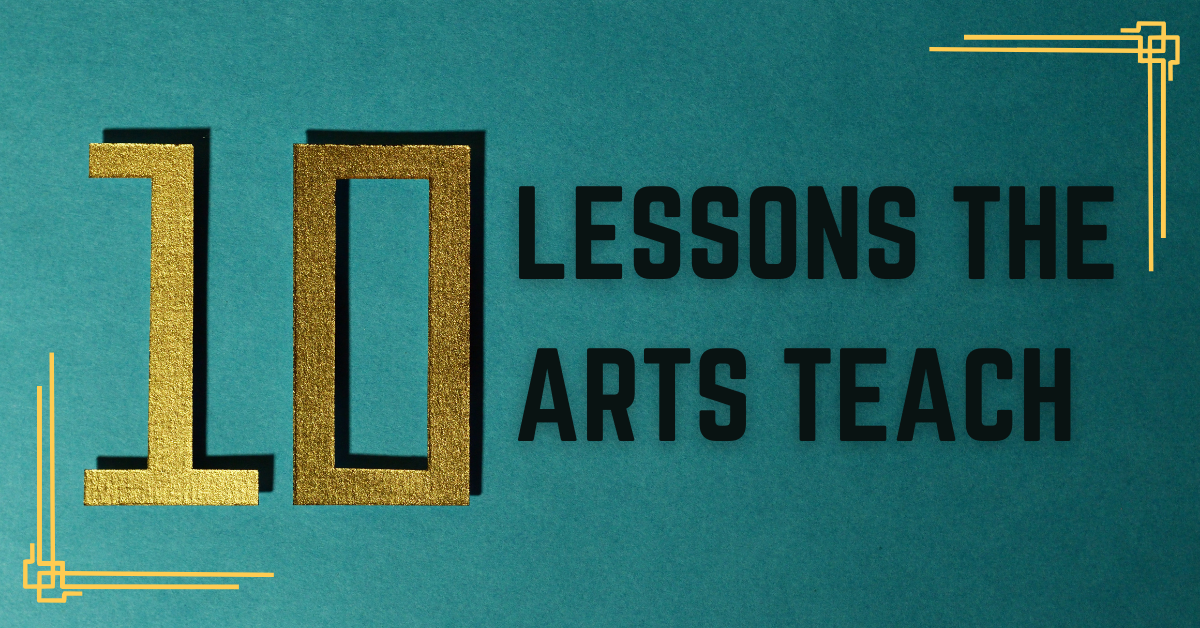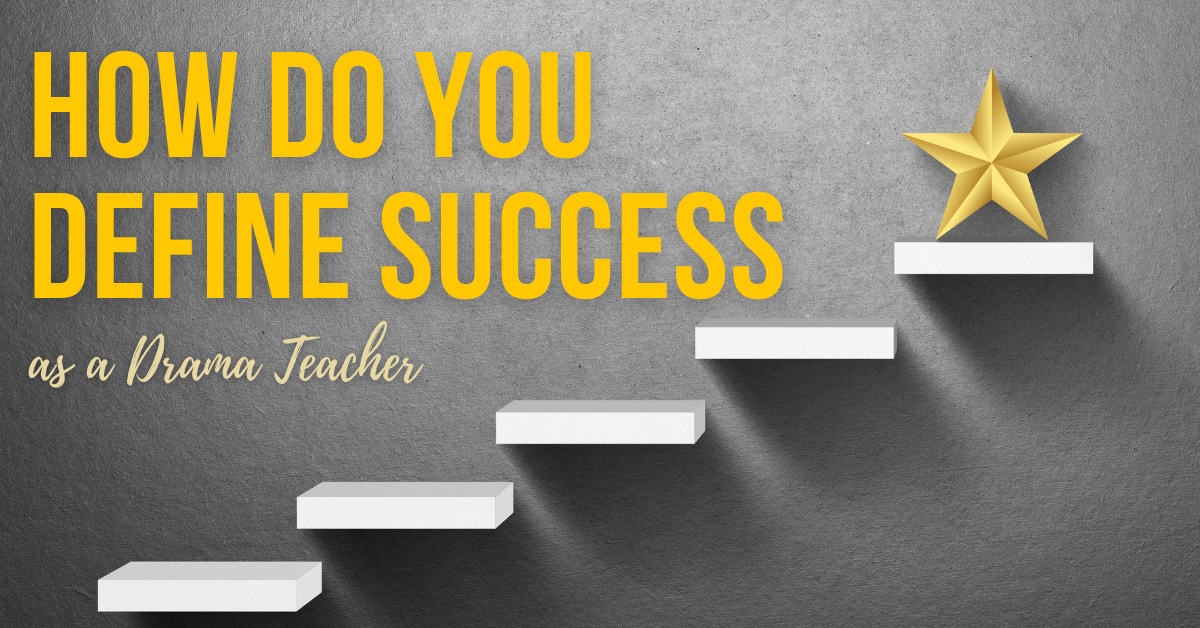Agatha Rex by Lindsay Price is a bold high school take on Antigone - packed with heart, conflict, and a powerhouse ensemble. One girl. One stand. One huge risk. *NEW COMPETITION VERSION AVAILABLE!*
Using Arts Statistics
The importance of Arts Education is hard to quantify. The Arts excel at improving intangible skills (e.g. communication, self-expression, creative and critical thinking) which don’t graph as well as test scores in Math. If you can’t numerically “prove” the success of your drama class, why should it exist?
This opinion is supported by a downward trend in the the number of arts programs and classes offered. The 2012 study Arts Education in Public Elementary and Secondary Schools found that 55% of High Schools (and a staggering 96% of Elementary Schools) in the US were not offering theatre.
But all is not lost. Many studies and research papers exist that strive to numerically prove the value of Arts Education. The goal of this research is to show that students with a high involvement in the arts succeed in quantifiable areas including attendance, grades, and post-secondary success. Additionally, some of these studies provide tangible data for those hard-to-quantify intangible skills.
Where do I start?
A quick Google search for Arts Education studies will give you a wealth of resources, and we’ve included some helpful links at the end of this article to get you started.
But how do you make sense of all this information, especially if you’re short on time or find the figures overwhelming?
Look for summaries
Let other people do the work for you. Americans for the Arts offers an excellent document that not only pulls out the most effective statistics, it also presents them in a highly visual manner. It is easy to read and understand.
What if I want to pick my own stats?
Perhaps you’re looking for data that tells you something specific and want to read the papers yourself. This is very time consuming for one person. So enlist the help of other teachers. Throw a Paper Reading Party with drama teachers from your district. Do it over Skype if it’s more convenient. Each teacher is responsible for reading a paper based on your specific criteria and reporting back. You may need to bribe them with pizza, but keeping arts programs alive is important to every arts educator.
How do I share this information?
How do you effectively get the data into the hands of those who might hold your program by a thread?
Visualize the Data
Organize the data so that it’s something to see rather than something to read. Handing someone a page of statistics is not as effective as showing the information visually, like an infographic. You want your information to be presented in an interesting and effective way.
What is an infographic? It’s exactly what it sounds like, a visual representation of information. There must a defined point to the infographic and something specific to learn. Here are a couple of examples.
What makes an effective infographic?
It’s all about the eyes. What do the eyes see? What do they register and take to the brain? Effective infographics provide information in a visual manner that highlights specific points.
Any text or statistic you think is important, must stand out and be easy to read. For example, I have no idea what I’m supposed to focus on in this infographic. It’s supposed to be about phones.
If you’re giving your infographic to someone who thinks numbers matter then make numbers the focal point. Do your numbers pop? In this infographic the number “1.66 Billion” stands out to me. I want to know the reason for that number. I’m willing to read further because the number has piqued my interest.
Use colour to draw the eye. This infographic has a lot of text and a lot of numbers but I don’t find it overwhelming to read because my eye is drawn to specific places. It’s not a wall of text all in one font size or colour. The numbers pop out.
Click the link at the end of this post for our Arts Eduction infographic: Students Involved in The Arts...Do What?
I can’t do this! How do I make an infographic?
There is a website for everything, including for infographics. Here are a couple of links to help you out.
Vocalize the Data
Cuts to the arts often happen out of ignorance – “It’s just a bunch of games.” Get out your megaphone, stand on your soapbox and let people know this is not true! If you can get support from your fellow teachers, from parents, from community leaders, it’s going to become harder to sweep your program under the rug. You need to become an Arts Advocate.
This toolkit from Americans for the Arts is a great place to start. It gives suggestions for how you can increase the visibility and awareness for your program, different ways for your voice to be heard and even how to write a piece for your local paper.
The Kennedy Centre has a toolkit for Arts Advocacy. It outlines the habits of effective advocates, prompts you to ask questions (what is my message, who is my message for, how am I delivering my message) and has a checklist for Individual Advocates:
- I stay informed about school, district, state, and national initiatives and conduct research on Arts Education.
- I inform colleagues, parents, neighbors, family members, friends, and others about the importance of Arts Education and local, state, and national initiatives.
- I speak to the principal at my school about the value of arts learning and what the current school programs need.
- I invite decision-makers, the media, and supporters to attend student performances and arts events.
- I recognize the contributions decision-makers have made to my school or district.
- I send decision-makers copies of newsletters, press releases, and articles about Arts Education.
- I thank decision-makers for their support
The Educational Theatre Association has an Advocacy page on their website. Follow them. Better yet, ask them questions or for recommendations.
And finally a list of useful quotes for Arts Advocateswith a PDF link.
Information is useful only if it’s seen, heard, and acted upon. That is the most important takeaway point – once you have the knowledge, share it. Let everyone know why the arts must be and should be an integral part of the education picture.
Take five minutes and write down five things you could do with an Arts Education statistic. Who could you share it with? How could you visualize it? How can you vocalize it?
Arts Education Studies
Below you’ll find a selection of Arts Education Studies/papers with some info on each. Click each title to link to the individual study.
The Arts and Achievement in At Risk Youth
- This study is easy to read, well laid out, lots of graphs and easy to extract information.
- Four studies that examine the academic and civic behaviour outcomes of teenagers and young adults who have engaged deeply with the arts.
- Looked at the effects of intensive arts involvement versus little to no art.
- A focus on youth from low socioeconomic status.
- Statistically significant differences favouring arts involvement were found.
- Students with an average of intense arts involvement show better academic outcomes.
- Students with high rich arts experiences were more likely to take a calculus course
- Students with few or no arts credits were five times more likely not to graduate than students with many arts credits.
- Students with high arts involvement more likely to be in honour societies.
- A long read but not difficult.
- Produced by the President’s Committee on the Arts and the Humanities
- Outcomes associated with Arts Education have become increasingly important.
- Arts instruction on a downward trend.
- The PCAH makes the following recommendations: build collaborations, develop arts integration, expand opportunities for teaching artists, use policy to reinforce the place of Arts Education, widen the focus of Arts Education evidence gathering.
- Forward by Arne Duncan US Secretary of Education – good text for quotes.
- Improved by arts involvement: student achievement, student motivation and engagement, problem solving skills, social competencies
- References a brain study paper that is looking at the effect of early Arts Education on brain development. Addressing the question of transfer learning – involvement in the arts transferring to higher grades in another subject for example.
- The need for a new skill set that addresses dropout rates and 21st century skills versus the decrease in arts program.
- Cites a study in New York City comparing arts resources in schools to graduation rates. School in bottom third offered least access to arts.
- Cites a study by the Conference Board which reports that employers rate creativity among the top five skills for workers.
- Appendix includes 13 additional studies.
Champions of Change: The Impact of The Arts on Learning
- A collection of studies. The purpose is to convince skeptics or neutral decision makers. Looks at why and how young people are change through their arts experience.
- When young people are involved with the arts, something changes in their lives.
- Although the youth in the arts programs were actually at greater “risk” than those in the other programs, the researchers found that characteristics particular to the arts made those programs more effective.
- Champions of change studies found much evidence that learning in the arts has significant effects on learning in other domains.
- Engagement in the arts – whether the visual arts, dance, music, theatre, or other disciplines – nurtures the development of cognitive, social and personal competencies.
- The arts regularly engage multiple skills and abilities.
- Findings: The arts…
- Reach students who are not otherwise being reached.
- Reach students in ways that they are not otherwise being reached.
- Transform the environment for learning.
- Provide learning opportunities for adults in the lives of young people.
- Provide new challenges for those students already considered successful.
- Connect learning experiences to the world of real work.
Critical Evidence: How the Arts Benefit Student Achievement
- A May 2005 Harris Poll on the attitudes of Americans toward Arts Education, commissioned by Americans for the Arts, revealed strong public support. Among the findings: 79% agree incorporating the arts into education is the first step in adding back what’s missing in public education today.
- Students who participate in arts learning experiences often improve their achievement in other realms of learning and life. In a well-documented national study using a federal database of over 25,000 middle and high school students, researchers from the University of California at Los Angeles found students with high arts involvement performed better on standardized achievement tests than students with low arts involvement (2002 Catterall, James S).
- 2005 College-Bound Seniors: Total Group Profile Report – “Students who took four years of arts coursework outperformed their peers who had one half-year or less of arts coursework by 58 points on the verbal portion and 38 points on the math portion of the SAT.”
- Students at risk of not successfully completing their high school educations cite their participation in the arts as reasons for staying in school.
Arts Education in Public Elementary and Secondary Schools
- A lot of graphs, tables and data in this study. The study outlines exactly how many schools were surveyed in each case, the socioeconomic status of schools, school characteristics and how schools were approached.
- The point of the study is to look at to what extent Arts Education instruction is occurring in schools and under what conditions.
- Covers the years 1999-2000, and 2009-2012.
- Looks at art, dance, music and drama/theatre – drama/theatre begins on page 46.
- In 2009/10 4% of elementary schools offered instruction for drama/theatre during school hours. In 1999/2000 it was 20%
- BUT in 2009/10 46% of elementary schools indicated that drama/theatre activities were integrated into other subjects. There is a table that indicates teachers who teach the arts as a separate subject and those who incorporate it into other subjects.
- In 2009/10 17% of elementary schools reported professional development for drama/theatre teachers.
- There is a breakdown of data of the types of teachers teaching drama/theatre (eg: full-time arts specialists).
- 45% of secondary schools surveyed offered drama/theatre instruction in 2008/09 down slightly from 48% in 1999/2000.
- In a survey of 18,000 secondary school drama teachers, 52% were using rooms dedicated to drama with special equipment. The study also lists percentages of rooms without special equipment, gyms and cafeteria use, and other rooms.
- 32% of secondary school drama teachers in 2009/10 received professional development.
Use Arts Integration to Enhance Common Core
- Short paper on Arts Integration.
- Integration requires collaboration, research, intentional alignment and practical application on behalf of the teachers who take on this challenge.
- Almost everyone has one art form (visual art, music, dance or drama) with which they connect and use to make sense of the world.
- Arts Integration seems to be hidden from view because teachers are nervous about their own artistic abilities, and also their ability to effectively facilitate a lesson that includes authentic arts standards
- Lesson plan that combines arts and math comprehension.
Project Based Learning as a Context for Arts Integration
- Short paper on Project Based Learning
- Using the arts as a gateway, an introduction into a project
- For example, have students do a “tableau” activity where they represent the structure of a cell.




